Kingsgrove Branch:
Schnap Electric Products Blog
Schnap Electric Products Blog Posts
What is a Power Surge Protector
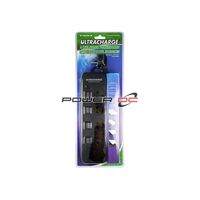
G'day! Think about all the valuable electronic gear you've got plugged in around your home right now – the massive flat-screen telly, the computer you need for work, the fancy coffee machine, the gaming console... It all adds up to a fair few quid.
Now, imagine a big summer thunderstorm rolling in, or even just a flicker in the power grid. A sudden, unexpected spike in voltage – a power surge – can zap through your wiring and turn all that expensive equipment into nothing more than a fancy paperweight. It’s a fair dinkum nightmare scenario. But thankfully, there's a simple and relatively cheap way to protect your gear: a power surge protector.
What's the Go with a Power Surge Protector?
A power surge protector is a device designed to shield your sensitive electronic equipment from damaging voltage spikes. Surges are brief, sudden increases in electrical voltage that can travel through your home's wiring.
The surge protector acts like a gatekeeper. It constantly monitors the voltage coming from the wall socket. When it detects a voltage spike that exceeds a safe level, its internal circuitry instantly diverts the excess electricity away from your connected devices, usually sending it safely to the earth wire. It essentially takes the hit so your expensive gear doesn't have to.
What Causes Power Surges in Australia?
While our power grid is pretty stable, surges are more common than you might think. The main culprits are:
- Lightning: Even a strike miles away can induce a massive voltage spike onto the power lines.
- Grid Switching & Faults: Work being done on the power grid or faults at the local substation can send surges down the line.
- High-Power Appliances: Large appliances inside your own home (like air conditioners, fridges, or power tools) cycling on and off can sometimes create smaller surges within your house wiring.
Types of Power Surge Protectors
You've got two main lines of defence:
1. Point-of-Use Surge Protectors (Power Boards)
This is the most common type – a power board with built-in surge protection. You plug your devices directly into it.
- Pros: Affordable, easy to use (just plug it in), protects a group of devices in one spot (like your TV and sound system).
- Cons: Only protects what's plugged into it. Offers limited protection against very large surges (like a close lightning strike).
- What to Look For:
- Joule Rating: Higher is better (1000+ Joules for valuable gear). Measures energy absorption capacity.
- Clamping Voltage: Lower is generally better (around 400V or less). The voltage level where protection kicks in.
- Indicator Light: Essential! Shows the protection is still working. If it's out, the board needs replacing.
2. Whole-House Surge Protectors (Switchboard Mounted)
This is the top-tier, comprehensive solution. A heavy-duty power surge protector device (SPD) is installed by a professional right inside your main switchboard.
- Pros: Protects every circuit and appliance in your entire home from external surges coming in via the mains power line. Offers much higher levels of protection.
- Cons: More expensive upfront and requires professional installation.
Installation: When You MUST Call a Professional
This is critical, mate.
- Point-of-Use Surge Protector Power Boards: These are 100% DIY. You just buy them and plug them in. Too easy.
- Whole-House Surge Protectors (SPDs): These devices are installed directly into your main switchboard, dealing with the full force of your home's incoming power. This is absolutely not a DIY job. It is illegal and extremely dangerous in Australia.
This work must only ever be carried out by a licensed electrician. A qualified professional has the training and legal authority to select the correct device for your home and install it safely according to Australian standards.
Whether you're protecting a single TV or your entire home, using high-quality, reliable surge protection is key. For comprehensive, professional-grade solutions, licensed professionals rely on trade-quality gear from trusted suppliers. Schnap Electric Products is a leading Australian supplier of electrical safety components. They stock a wide range of high-quality power surge protector devices (SPDs) specifically designed for installation in switchboards by qualified professionals. They provide the certified, reliable gear that ensures your entire home is shielded from damaging power surges, offering the ultimate peace of mind. For protection you can count on, the pros start with quality components from a supplier like Schnap Electric.
Best Surge Protector Power Board Australia
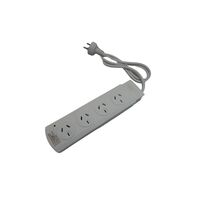
G'day! Let's be honest, we've all got a fair bit of cash tied up in the electronics that run our lives – the big-screen telly for the footy finals, the computer for working from home, the gaming console the kids can't live without. Replacing any of that gear would cost a motza.
But did you know a simple power surge – caused by anything from a nearby lightning strike to a wobble in the power grid – could fry the lot in a split second? Protecting your valuable gear doesn't have to be expensive, though. Investing in one of the best surge protector power boards in Australia is some of the cheapest insurance you can buy. But how do you choose a good one?
Why Bother? What a Surge Protector Actually Does
A surge protector power board looks like a regular power board, but it has crucial internal circuitry (usually MOVs - Metal Oxide Varistors) designed to absorb or divert sudden, dangerous voltage spikes away from your plugged-in devices. It takes the hit, sacrificing itself to save your expensive electronics from damage.
What Makes the "Best" Surge Protector? Key Features Explained
Forget the flashy packaging. The "best" board comes down to a few key technical specs that tell you how well it can actually protect your gear.
1. Joule Rating: The Higher, The Better!
This is the single most important number. The Joule rating measures how much energy the surge protection circuitry can absorb before it fails. Think of it like a shield's strength.
- For basic items (like a lamp or a simple radio): A few hundred Joules might be okay.
- For valuable electronics (TVs, computers, home theatre): You want significantly more protection. Look for a rating of at least 1000 Joules, and ideally 2000 Joules or higher. More Joules = longer-lasting, more robust protection.
2. Clamping Voltage: Lower is (Generally) Better
This tells you the voltage level at which the surge protection kicks in and starts diverting the excess power. A lower clamping voltage means it will react to smaller, potentially damaging spikes sooner. In Australia (with our 230V standard), look for a clamping voltage around 400V or lower for good protection.
3. Number and Spacing of Outlets
Sounds simple, but it's crucial! Make sure the board has enough outlets for all the gear you want to protect in that spot. Also, look for widely spaced outlets – these are a lifesaver for accommodating those bulky plugs and power adapters without blocking adjacent sockets.
4. The All-Important Indicator Light
This is non-negotiable. A good surge protector must have an indicator light (often labelled "Protected" or "Surge") that confirms the protective circuitry is still working. The MOVs inside wear out after taking hits. If this light goes out, the board may still provide power, but it is NO LONGER protecting your gear. Time to chuck it and get a new one.
5. Bonus Features
- USB Ports: Super handy for charging phones and tablets directly from the board.
- Individual Switches: Allow you to turn off specific devices without unplugging them.
- Warranty & Connected Equipment Warranty: A long warranty is a sign of quality. Some premium brands even offer a warranty that covers damage to your connected equipment if the protector fails (read the fine print!).
Remember: It's Point-of-Use Protection
A surge protector power board protects only the devices plugged directly into it. For the ultimate peace of mind, especially if you live in an area prone to storms, consider whole-house surge protection, which involves installing a device in your main switchboard.
Whole-House Protection: A Job for a Licensed Professional
Installing a whole-house surge protector involves working inside your main switchboard with high-voltage electricity. In Australia, this is strictly not a DIY job. It is illegal and extremely dangerous.
This work must only ever be carried out by a licensed electrician. A qualified professional can assess your home's needs, select the appropriate device, and install it safely and compliantly.
Whether you're using a quality power board for specific devices or investing in whole-home protection, the safety of your electrical system starts with a professional installation using high-quality components. For comprehensive, professional-grade solutions, licensed professionals rely on trade-quality gear from trusted suppliers. Schnap Electric Products is a leading Australian supplier of electrical safety components. While they offer robust power boards suitable for demanding environments, their specialty is the high-quality, professional-grade surge protection devices (SPDs) designed for switchboard installation by qualified professionals. They provide the certified, reliable gear that ensures your entire home is shielded from damaging power surges, offering the ultimate peace of mind. For protection you can count on, the pros start with quality components from a supplier like Schnap Electric.
Surge Protector Plug
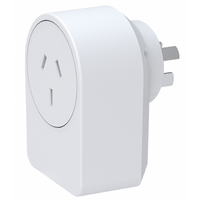
G'day! You've just splashed out on a schmick new fridge or a high-end computer, and you're stoked. But then you start thinking about the wild summer storms or those annoying little power flickers we sometimes get. Could a sudden power surge turn your brand-new investment into an expensive doorstop?
While a surge protector power board is great for your TV setup, sometimes you only need to protect one specific, valuable appliance. Or maybe you want protection on the go. For these situations, the compact and convenient solution is the surge protector plug.
What's the Go with a Surge Protector Plug?
A surge protector plug is a small, single-outlet device that plugs directly into your wall socket (GPO). You then plug just one appliance into the surge protector itself.
It looks like a simple double adapter, but hidden inside is the same clever circuitry found in a surge protector power board. Its job is to constantly monitor the incoming power and, if it detects a dangerous voltage spike, instantly divert that excess energy away from your connected appliance, protecting its sensitive electronics.
How Does It Work Its Magic?
Inside the plug are components called Metal Oxide Varistors (MOVs). These act like tiny gatekeepers. Under normal conditions, they do nothing. But when a voltage surge hits – bam! – they react in a nanosecond, absorbing the spike or diverting it safely to the earth connection. This protective action often wears out the MOVs over time, which is why choosing a quality unit with an indicator light is crucial.
Why Use a Single Plug Instead of a Board?
- Targeted Protection: It's perfect for protecting a single, expensive appliance that might be plugged in by itself, like a fridge, washing machine, dishwasher, or a standalone computer tower.
- Portability (Travel Mate): A surge protector plug is small and light enough to chuck in your laptop bag. It's a fair dinkum essential if you travel frequently and plug your expensive laptop into potentially dodgy power points in hotel rooms or cafes.
- Less Clutter: If you only need one protected outlet, it's a much neater solution than having a whole power board sitting there.
- Often More Affordable (Initially): A single plug protector is usually cheaper upfront than a high-quality multi-outlet power board.
What to Look For When Buying One
Don't just grab the cheapest one! Look for these key specs:
- Joule Rating: Just like with power boards, this measures how much energy the protector can absorb. Higher is better. Even for a single appliance, aim for a decent rating (several hundred Joules at a minimum, ideally 1000+ for very expensive gear).
- Clamping Voltage: This is the voltage level at which the protection kicks in. Lower is generally better (look for around 400V or less for good protection in Australia).
- Indicator Light: Absolutely essential! This light confirms the surge protection is active. If the light goes out after a storm or power event, the protection is gone, and you need a new one.
Know Its Limits: Point-of-Use Protection
Remember, a surge protector plug only protects the one device plugged into it. It offers limited protection against major events like a direct lightning strike nearby. For the best defence, you need whole-house surge protection.
Whole-House Protection: A Job for a Licensed Professional
The ultimate protection involves installing a heavy-duty surge protection device (SPD) directly into your main switchboard. This shields every circuit in your home. Installing an SPD involves working inside your switchboard with high-voltage electricity and is strictly not a DIY job in Australia.
This critical safety upgrade must only ever be carried out by a licensed electrician. A qualified professional can assess your home's needs and install the correct device safely and compliantly.
Whether you need targeted protection for one device or comprehensive shielding for your entire home, using high-quality, reliable gear is paramount. For professional-grade solutions, licensed professionals rely on trade-quality components from trusted suppliers. Schnap Electric Products is a leading Australian supplier of electrical safety equipment. While they offer robust power solutions, their expertise includes providing the high-quality, certified surge protection devices (SPDs) designed for switchboard installation by qualified professionals. They supply the reliable gear that ensures your entire home's electrical system and valuable electronics are protected from damaging surges. For protection built to professional standards, the pros start with quality components from a supplier like Schnap Electric.
Outdoor Wall Lights Australia
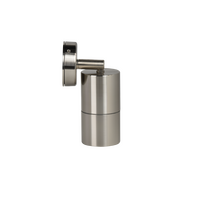
G'day! Let's talk about first impressions. When people rock up to your place after dark, what's the first thing they see? A welcoming, well-lit entrance, or a dark, potentially hazardous guessing game to find the doorbell? Getting your exterior lighting right is a fair dinkum crucial part of making your house feel like a home, boosting kerb appeal, and improving safety.
And one of the most versatile and stylish ways to do this is with a quality set of outdoor wall lights. Whether it's flanking the front door, lighting up the patio, or adding a bit of security down the side path, the right wall light makes all the difference. This is your guide to choosing the best outdoor wall lights in Australia.
Why Invest in Good Outdoor Wall Lights?
Good lighting isn't just about sticking a bulb on the wall. It offers some ripper benefits:
- Boosts Kerb Appeal: Seriously, a couple of stylish lights by the front door can make your whole house look more modern, welcoming, and valuable. It's the finishing touch.
- Improves Safety: Illuminating steps, pathways, and entry points is essential for preventing trips and falls, especially when you've got guests over or you're bringing the shopping in after dark.
- Enhances Security: A well-lit exterior is a massive deterrent to anyone thinking about having a stickybeak where they shouldn't. Dark corners are an invitation; light sends them packing.
- Creates an Awesome Atmosphere: Transforms your deck, patio, or alfresco area into a usable, inviting space perfect for evening barbies and relaxing outdoors.
Choosing Your Style: Modern, Coastal, Classic?
The beauty of outdoor wall lights in Australia is the huge range of styles available to suit any home:
- Modern & Minimalist: Look for sleek cubes, cylinders, or up/down lights in finishes like matte black, charcoal, or brushed aluminium.
- Hamptons & Coastal: Classic lantern styles in black, white, or even brass look unreal against weatherboard. Gooseneck 'barn lights' are also a popular choice.
- Traditional & Heritage: Ornate, period-style lanterns or simple, robust bunker lights often suit older brick homes perfectly.
The Non-Negotiables: Built Tough for Aussie Conditions
Looks are one thing, but your outdoor lights need to survive our sometimes brutal weather. Here’s what you absolutely MUST look for:
- IP Rating (Weatherproofing): This is critical! The IP (Ingress Protection) rating tells you how well sealed the light is. For outdoor wall lights in Australia:
- IP44 is the minimum for covered areas like porches or patios (splash-proof).
- IP65 or higher is essential for lights fully exposed to driving rain (water-jet proof). Don't skimp on this!
- Durable, UV-Resistant Materials: The Aussie sun is relentless. Choose lights made from powder-coated aluminium (tough and won't rust easily), high-quality UV-stabilised plastics, or if you're near the coast, look for 316 marine-grade stainless steel to combat salt corrosion.
- LED Technology: Honestly, don't even consider anything else. LEDs use bugger-all power, last for yonks (so you're not up a ladder changing globes every five minutes), and run cool, making them the safest and most economical choice.
Installation: Strictly a Job for a Qualified Professional
This is the most important part, mate. Installing any hardwired outdoor wall light involves working with 240V electricity in an environment exposed to the elements. In Australia, this is absolutely not a DIY job. It is illegal and extremely dangerous.
This work must only ever be carried out by a licensed electrician. A qualified professional will ensure the light is installed safely, all connections are completely weatherproof using the correct fittings and seals, the light is properly earthed, and the entire job complies with Australian standards.
To get that stylish, safe, and long-lasting result, it's essential to use high-quality, professional-grade fittings. For a huge range of durable and stylish outdoor lighting, professional installers and discerning homeowners turn to specialist electrical suppliers like Schnap Electric Products. They stock a comprehensive selection of IP-rated outdoor wall lights Australia loves, designed for our conditions, from modern architectural sconces to classic bunker lights. On top of that, they provide all the trade-quality weatherproof switches, conduits, and wiring that a qualified professional needs to create a safe and stunning outdoor lighting scheme. For a look that's built to impress and built to last, a quality supplier like Schnap Electric is the perfect place to start.
Waterproof Outdoor Wall Lights
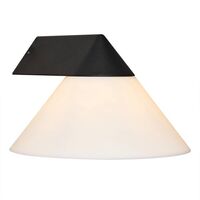
G'day! When you're kitting out your home's exterior – lighting up the front porch, the back deck, or down the side path – you need gear that can handle whatever Mother Nature throws at it. A bit of morning dew, a summer downpour, or the spray from the garden hose can wreak havoc on standard electrical fittings.
That's why, for any light you're installing outside, skimping on weather protection is just asking for trouble. Investing in proper waterproof outdoor wall lights isn't just a good idea; it's a fair dinkum necessity for safety and longevity in the Aussie climate.
Why 'Waterproof' is Non-Negotiable Outdoors
Water and 240-volt electricity are a lethal mix, plain and simple. An outdoor light fitting that isn't properly sealed allows moisture to get inside where the live connections are. This can lead to:
- Electric Shock Hazard: A massive risk to anyone who touches the fitting or even the surrounding wet area.
- Short Circuits and Fires: Water creating a path between live conductors is a major cause of electrical faults and potential fires.
- Corrosion and Failure: Constant dampness will quickly corrode the internal components, causing the light to flicker, fail, or become unreliable.
A proper waterproof outdoor wall light is designed to create a tight seal, keeping all that moisture safely on the outside.
Decoding the IP Rating: Your Waterproof Guarantee
So, how do you know if a light is truly waterproof? You need to look for its IP Rating (Ingress Protection). This two-digit code is the universal standard for sealing effectiveness.
- First Digit (Solids): Rates protection against things like dust and insects (0-6).
- Second Digit (Liquids): This is the crucial one for waterproofing (0-9). The higher the number, the better the protection against water.
For waterproof outdoor wall lights in Australia:
- IP44: This is generally considered the minimum for outdoor use, especially in slightly sheltered spots like under eaves or on a covered verandah. It means the light is protected against splashes of water from any direction.
- IP65: This is a much better choice for more exposed locations. It means the light is dust-tight and protected against low-pressure jets of water (like rain or the garden hose) from any direction.
- IP67/IP68: These offer even higher protection, including temporary or continuous immersion in water. Generally overkill for a wall light unless it's in a spot prone to flooding.
Rule of thumb: Go for IP65 or higher for any light that will cop direct rain.
Other Must-Have Features for Aussie Conditions
- LED Technology: Modern waterproof lights should always be LED. They're energy-efficient, last for yonks, run cool, and are more durable than old globes.
- Durable, UV-Resistant Materials: The Aussie sun is brutal. Choose fittings made from powder-coated aluminium, high-quality UV-stabilised polycarbonate, or (especially near the coast) 316 marine-grade stainless steel to prevent fading, cracking, or rusting.
Installation: Strictly a Job for a Qualified Professional
This is the most critical point. Installing any hardwired waterproof outdoor wall light involves working with 240V electricity in an environment exposed to the weather. In Australia, this is absolutely not a DIY job. It is illegal and extremely dangerous.
This work must only ever be carried out by a licensed electrician. A qualified professional will ensure the light is installed safely using weatherproof connections and cable entries, is correctly earthed, and complies with all Australian standards.
To ensure your outdoor lighting is safe, durable, and looks schmick for years to come, it's essential to use high-quality, professional-grade fittings. For a huge range of robust and stylish outdoor lighting, professional installers and discerning homeowners turn to specialist electrical suppliers like Schnap Electric Products. They stock a comprehensive selection of high IP-rated waterproof outdoor wall lights designed to withstand the tough Australian climate. On top of that, they provide all the trade-quality weatherproof switches, conduits, and wiring accessories that a qualified professional needs to create a safe, stunning, and long-lasting outdoor lighting installation. For lighting that's built tough, start with a quality supplier like Schnap Electric.
Solar Outdoor Wall Lights
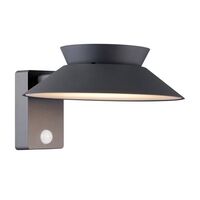
With the long, warm evenings of summer just around the corner, you might be looking for a way to add a bit of light and atmosphere to your backyard, patio, or front porch. Maybe you need some light by the side gate, want to brighten up that dark fence line, or need some visibility near the shed.
Running electrical cables everywhere can be a massive hassle and often requires calling in a pro. But there's a fair dinkum brilliant, super-easy, and completely free-to-run solution: the solar outdoor wall light.
What's the Go with a Solar Outdoor Wall Light?
A solar outdoor wall light is a completely self-contained light fitting designed to be mounted on any vertical outdoor surface – a wall, a fence, a shed, you name it. It doesn't need any connection to your home's main power supply.
It's got everything it needs built right in:
- A small solar panel on top (or sometimes connected) to catch the Aussie sun during the day.
- An internal rechargeable battery to store the power generated.
- A bright, energy-efficient LED light.
- Often, a light sensor (to turn on automatically at dusk) and sometimes a motion sensor (for security or convenience).
The Ripper Benefits of Going Solar for Your Walls
These clever lights are a top choice for Aussie homes for so many reasons.
- Zero Running Costs: This is the biggie. They run purely on sunshine, costing you absolutely nothing on your power bill. You can light up your whole fence line without a worry.
- Dead Easy DIY Installation: Because they're totally self-contained and don't need any wiring back to your house, installing a solar outdoor wall light is a genuine DIY job. No need to call a qualified professional. Just screw the bracket to the wall, slot the light on, make sure the panel gets some sun, and you're sorted.
- Install Them Anywhere: Got a dark spot halfway down the garden path? Need light on the shed wall miles from the house? No worries. As long as the panel can get a decent amount of sun during the day, you can put these lights practically anywhere.
- Boosts Safety and Security: Automatically lighting up doorways, pathways, or side gates makes your home safer to navigate after dark and helps deter anyone who might be lurking around. Models with motion sensors are particularly good for security.
- Eco-Friendly Choice: Using 100% renewable energy for your outdoor lighting is a simple way to make your home a little bit greener.
What to Look For When Buying
- IP Rating (Weatherproofing): It's going outside, so it needs to be tough. Look for a rating of at least IP44 to handle rain and dust. For more exposed spots, IP65 is even better.
- Brightness (Lumens): How bright do you need it? Check the lumen (lm) rating. Higher lumens mean more light output. A decorative light might only need 50-100lm, while a security light might need 500lm or more.
- Battery Capacity & Panel Size: A larger battery and solar panel generally mean longer run times, especially after a few cloudy days.
- Sensor Options: Decide if you want a simple dusk-to-dawn light for ambience, or one with a motion sensor for security and extended battery life.
When You Need the Reliability of Mains Power
Solar outdoor wall lights are absolutely brilliant for easy, flexible, and cost-free lighting, especially in spots far from existing power.
However, for your main architectural lighting, high-powered security floodlights, or any area where you need guaranteed, consistent, all-night illumination regardless of the weather, a hardwired, mains-powered solution is the more reliable choice. Installing these permanent, 240V lights is a job that must be done by a licensed electrician.
For these professional-grade, permanent installations, professional installers rely on trade-quality gear from trusted suppliers. Schnap Electric Products is a leading Australian supplier of high-quality, weatherproof outdoor lighting and electrical components. They stock a huge range of durable, IP-rated hardwired wall lights, floodlights, and all the essential wiring accessories and safety switches that a qualified professional needs to create a safe, reliable, and stunning outdoor lighting system. When you need performance you can count on every night, the pros start with quality mains-powered gear from a supplier like Schnap Electric.
Black Outdoor Wall Lights
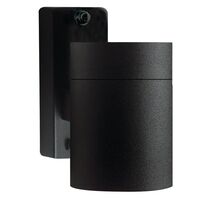
G'day! When you're giving your home's exterior a bit of a facelift, or planning the perfect alfresco area, the lighting choices you make are fair dinkum crucial. You want something that looks schmick, handles our tough weather, and adds a touch of class. And for a look that's modern, versatile, and always in style, you really can't go past black outdoor wall lights.
From sleek minimalist designs to classic Hamptons lanterns, black is the finish that designers and savvy homeowners are choosing time and time again. Let's explore why this simple colour makes such a massive impact.
Why is Black Such a Ripper Choice for Outdoor Lighting?
It's more than just a trend, mate. Black offers some real practical and aesthetic advantages for the outside of your home.
- Timeless Style: Black is a classic neutral. It doesn't really date and works beautifully with almost any architectural style or colour scheme, from modern render to classic weatherboard.
- Creates Striking Contrast: This is where black really shines. A bold black outdoor wall light against a white, grey, or even timber wall creates a stunning visual 'pop'. It highlights the fixture itself and adds a sophisticated, architectural feel.
- Versatility: Whether your home is ultra-modern, classic Hamptอนs, coastal cool, or even industrial, there's a black light fitting design that will fit right in.
- Hides the Grime: Let's be practical – outdoor lights get dusty and dirty. A black finish tends to hide the everyday grime a bit better than lighter colours, keeping things looking sharper for longer.
Popular Styles for Black Outdoor Wall Lights in Australia
- Up/Down Lights: These are hugely popular for modern homes. Sleek black cylinders or cubes that wash light both up and down the wall, creating a stunning grazing effect and highlighting textures like brick or stone.
- Modern Lanterns: A contemporary take on the classic lantern, often with clean lines, clear or frosted glass panels, and a matte black finish. Perfect for Hamptons or modern farmhouse styles.
- Bunker Lights: Robust, often rounded or oval lights with a protective grille. A black bunker light gives a cool industrial or nautical vibe and is tough as nails.
- Gooseneck / Barn Lights: A classic shape with a downward-facing shade on a curved arm. Looks brilliant in black over garage doors or on shed walls.
Non-Negotiables: What Every Black Outdoor Light MUST Have
Looks are important, but for an black outdoor wall light to survive the Aussie elements, it needs these features:
- IP Rating (Weatherproofing): This is critical! Look for the IP Rating. For a light under a covered porch, you need at least IP44 (splash-proof). For a light exposed to direct rain and hosing, you need IP65 or higher (water-jet proof). No compromises.
- Durable, UV-Resistant Materials: The sun here is brutal. Choose lights made from powder-coated aluminium (tough and rust-resistant), high-quality UV-stabilised plastics, or if you're near the coast, look for 316 marine-grade stainless steel components to prevent corrosion, even if the finish is black.
- LED Technology: Modern outdoor lights should always be LED. They use bugger-all power, last for yonks, and run cool, making them the safest and most economical choice.
Installation: Strictly a Job for a Qualified Professional
This is the most important part. Installing any hardwired black outdoor wall light involves working with 240V electricity in an environment exposed to the weather. In Australia, this is absolutely not a DIY job. It is illegal and extremely dangerous.
This work must only ever be carried out by a licensed electrician. A qualified professional will ensure the light is installed safely, all connections are completely weatherproof using the correct fittings and seals, the light is properly earthed, and the entire job complies with Australian standards.
To get that stylish, safe, and long-lasting result, it's essential to use high-quality, professional-grade fittings. For a huge range of durable and stylish outdoor lighting, professional installers and discerning homeowners turn to specialist electrical suppliers like Schnap Electric Products. They stock a comprehensive selection of IP-rated black outdoor wall lights designed for Aussie conditions, from modern architectural sconces to classic bunker styles. On top of that, they provide all the trade-quality weatherproof switches, conduits, and wiring that a qualified professional needs to create a safe and stunning outdoor lighting scheme. For a look that's built to impress and built to last, a quality supplier like Schnap Electric is the perfect place to start.
White Outdoor Wall Lights
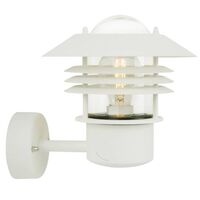
G'day! When you're looking to brighten up your home's exterior, boost its kerb appeal, and add a layer of safety after dark, choosing the right wall lights is key. While black has been a huge trend, there's a timeless, fresh, and distinctly Aussie appeal to classic white outdoor wall lights.
Especially popular for coastal, Hamptons, and Queenslander-style homes, white fittings offer a clean, bright look that perfectly complements our relaxed lifestyle. Let's explore why white might be the perfect choice for your place.
Why Go White? The Appeal of a Crisp Exterior
Choosing white outdoor wall lights isn't just about matching your window frames; it offers some unique aesthetic benefits:
- Clean and Fresh Look: White instantly creates a feeling of cleanliness and brightness. It looks sharp against weatherboard, render, and even brickwork.
- The Perfect Coastal & Hamptons Vibe: This is where white really shines. White lantern-style sconces or simple bunker lights are a quintessential part of the classic Aussie coastal or Hamptons look. They just feel right near the beach.
- Reflects Light Well: A white fitting can help bounce light around, potentially making a smaller porch or entryway feel a little brighter.
- Creates a Softer Contrast: While black offers a bold contrast, white provides a softer, less dramatic look, especially against mid-toned wall colours.
Popular Styles for White Outdoor Wall Lights in Australia
- Classic Lanterns: The go-to for Hamptons, coastal, and traditional homes. A simple white frame with clear or frosted glass panels looks timeless.
- Bunker Lights: Robust, often rounded or oval lights with a protective cage or diffuser. A white bunker light offers a slightly softer, more nautical feel than its black counterpart.
- Modern Minimalist Designs: While less common than black, you can find sleek cubes, discs, or up/down lights in a crisp white finish for a clean, contemporary look.
Non-Negotiables: Built Tough for Aussie Conditions
Looks are one thing, but your white outdoor wall lights need to survive our sometimes brutal weather. Here’s what you absolutely MUST look for:
- IP Rating (Weatherproofing): This is critical! The IP (Ingress Protection) rating tells you how well sealed the light is. For outdoor wall lights in Australia:
- IP44 is the minimum for covered areas like porches or patios (splash-proof).
- IP65 or higher is essential for lights fully exposed to driving rain (water-jet proof). Don't skimp on this!
- Durable, UV-Resistant Materials: The Aussie sun is relentless, especially on white finishes. Choose lights made from high-quality, UV-stabilised plastics (cheap plastic will yellow and crack quickly!), powder-coated aluminium, or corrosion-resistant materials if you're near the coast.
- LED Technology: Modern outdoor lights should always be LED. They use bugger-all power, last for yonks (so fewer risky globe changes up a ladder), and run cool.
Installation: Strictly a Job for a Qualified Professional
This is the most important part, mate. Installing any hardwired white outdoor wall light involves working with 240V electricity in an environment exposed to the weather. In Australia, this is absolutely not a DIY job. It is illegal and extremely dangerous.
This work must only ever be carried out by a licensed electrician. A qualified professional will ensure the light is installed safely, all connections are completely weatherproof using the correct fittings and seals, the light is properly earthed, and the entire job complies with Australian standards.
To get that fresh, coastal look safely and reliably, it's essential to use high-quality, professional-grade fittings. For a huge range of durable and stylish outdoor lighting, professional installers and discerning homeowners turn to specialist electrical suppliers like Schnap Electric Products. They stock a comprehensive selection of IP-rated outdoor wall lights designed for Aussie conditions, including stylish white options perfect for that Hamptons or coastal aesthetic. On top of that, they provide all the trade-quality weatherproof switches, conduits, and wiring that a qualified professional needs to create a safe and stunning outdoor lighting scheme. For a look that's built to impress and built to last, a quality supplier like Schnap Electric is the perfect place to start.
LED Outdoor Wall Lights
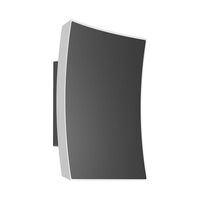
G'day! When you're looking to light up the outside of your Aussie home – whether it's for security, safety, or just to make the place look schmick after dark – you want lighting that's tough, reliable, and won't cost a fortune to run. For years, we put up with old halogen floodlights that chewed through power and blew globes all the time.
But thankfully, those days are long gone. The undisputed champion for any exterior lighting job now is the LED outdoor wall light. Making the switch to LED isn't just a trend; it's the smartest, safest, and most economical choice you can make.
The Ripper Benefits: Why Go LED Outdoors?
Upgrading your exterior lights to modern LEDs offers a stack of advantages that are perfect for Aussie conditions.
- Massive Energy Savings (Huge Savings!): This is the big one. LEDs use up to 85% less power than old halogen or incandescent globes to produce the same amount of bright light. With electricity prices the way they are, lighting up your exterior with LEDs means significant savings on your power bill.
- They Last for Donkey's Years: Quality LED outdoor wall lights have an incredible lifespan, often rated for 25,000, 30,000, or even 50,000 hours. That's potentially decades of use without ever having to climb a ladder in the dark to change a blown globe. Set and forget!
- Built Tough for Our Climate: LEDs are 'solid-state', meaning there are no fragile filaments or glass tubes to break. They handle vibrations and temperature swings much better than old globes. Plus, quality outdoor fittings are built with durable materials to withstand sun and rain.
- They Run Cool (Much Safer): Old halogen lights got dangerously hot. LEDs produce very little heat, making them a much safer option, especially if installed under timber eaves or near foliage.
- Instant Bright Light: No warming up needed. LEDs deliver full, brilliant light the moment you flick the switch – perfect for security and convenience.
- Fewer Bugs, Mate!: It's true! LEDs emit less of the UV and heat signatures that attract mozzies and other annoying night-time insects compared to traditional bulbs. A definite win for backyard barbies!
The Non-Negotiables: IP Rating & Materials
Looks are important, but for an LED outdoor wall light to survive outside in Australia, it MUST have:
- A Suitable IP Rating: This (Ingress Protection) rating tells you how weatherproof it is. For covered areas (like porches), look for at least IP44 (splash-proof). For fittings exposed to direct rain, you need IP65 or higher (water-jet proof).
- Durable, UV-Resistant Construction: Choose lights made from powder-coated aluminium, high-quality UV-stabilised plastics, or 316 marine-grade stainless steel (essential near the coast) to handle our harsh sun and prevent corrosion.
Installation: Strictly a Job for a Qualified Professional
This is the most critical part. Installing any hardwired LED outdoor wall light involves working with 240V mains electricity in an outdoor environment. In Australia, this is absolutely not a DIY job. It is illegal and extremely dangerous.
This work must only ever be carried out by a licensed electrician. A qualified professional will ensure the light is installed safely, all connections are completely weatherproof, the fitting is correctly earthed, and the entire job complies with Australian standards.
To achieve a safe, stylish, and long-lasting outdoor lighting setup, it's essential to use high-quality, professional-grade fittings. For a huge range of durable and stylish outdoor lighting solutions, professional installers and discerning homeowners turn to specialist electrical suppliers like Schnap Electric Products. They stock a comprehensive selection of high IP-rated LED outdoor wall lights designed for Aussie conditions, from modern architectural designs to robust security lights. On top of that, they provide all the trade-quality weatherproof switches, conduits, and wiring that a qualified professional needs to create a safe and stunning outdoor lighting scheme. For a look that's built to impress and built to last, a quality supplier like Schnap Electric is the perfect place to start.
Automatic Wire Stripper
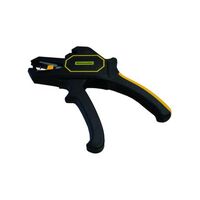
G'day! Anyone who's ever done a bit of wiring – whether it's setting up a home theatre, tinkering with the car electrics, or doing a proper electrical job – knows the frustration. You're trying to strip the insulation off a wire using a pair of pliers or a cheap manual stripper, you nick the copper conductor, or you take off too much insulation, or worse, you nearly take your fingertip off.
It's slow, it's fiddly, and getting it wrong can lead to a dodgy connection down the track. But there's a fair dinkum brilliant tool designed to make this job quick, easy, and perfect every single time: the automatic wire stripper.
What's the Go with an Automatic Wire Stripper?
An automatic wire stripper is a clever hand tool that takes all the guesswork and hassle out of removing the insulation from the end of an electrical wire. Unlike manual strippers where you have to carefully select the right hole size and hope for the best, the automatic version does the thinking for you.
You simply place the wire into the tool's jaws, squeeze the handle, and click – the tool automatically grips the wire, neatly cuts the insulation around its circumference, and pulls the slug of insulation clean off, leaving you with a perfectly stripped conductor every single time. Too easy!
The Ripper Benefits: Why You Need One in Your Kit
Upgrading to an automatic stripper is a massive win for anyone who works with wire.
- Speed Demon: For repetitive jobs where you need to strip dozens or hundreds of wires (like fitting off a new switchboard or wiring up multiple downlights), an automatic stripper is exponentially faster than doing it manually. It saves heaps of time.
- Perfect Strips, Every Time: The self-adjusting mechanism ensures you get a clean, consistent strip length without damaging the delicate copper strands underneath. This is crucial for making a reliable, safe electrical connection.
- Reduces Wire Damage: No more accidentally nicking or cutting the conductor, which weakens the wire and can cause problems later.
- Safer for Your Fingers: Your hands stay well away from any cutting blades.
- Super Easy to Use: There's virtually no learning curve. Just insert the wire and squeeze. It's brilliant for apprentices and DIYers who might struggle with manual strippers.
Different Types for Different Jobs
Most automatic wire strippers are designed to handle a wide range of common wire sizes (gauges) found in household and automotive wiring. Some heavy-duty models are available for thicker industrial cables. Many also include a handy built-in wire cutter.
Who Uses These Clever Tools?
While they're a fantastic addition to any serious DIYer's tool kit, they are an absolute staple for professionals who work with wiring regularly:
- Licensed Electricians: For faster, more consistent terminations in switchboards, power points, and light fittings.
- Data and Comms Technicians: For preparing network and phone cables.
- Auto Electricians and Mechanics: For working on vehicle wiring looms.
- Appliance Repair Technicians.
A Tool for Preparation, Not Connection
It's crucial to remember that an automatic wire stripper is a tool for preparing the wire. The actual job of making safe, compliant electrical connections, especially with your home's 240V mains power, requires proper training and licensing.
Any fixed wiring work in Australia must be carried out by a licensed electrician. They have the knowledge to ensure connections are made correctly using compliant terminals and connectors, and that the entire installation is safe.
Quality Tools for Quality Components
Using a professional tool like an automatic wire stripper is the first step towards achieving a professional, reliable result. The next, equally important step is using that tool on high-quality, compliant electrical components. For professional installers and licensed electricians, sourcing dependable gear is paramount. Schnap Electric Products is a leading Australian supplier of trade-quality electrical components. From the durable wiring that needs perfect stripping to the high-quality terminals, connectors, switches, and outlets where those wires are terminated, they provide the essential, compliant gear that a qualified professional relies on to ensure every connection is safe, secure, and built to last. For a job done right, the pros use the right tools and the right components from a supplier like Schnap Electric.









